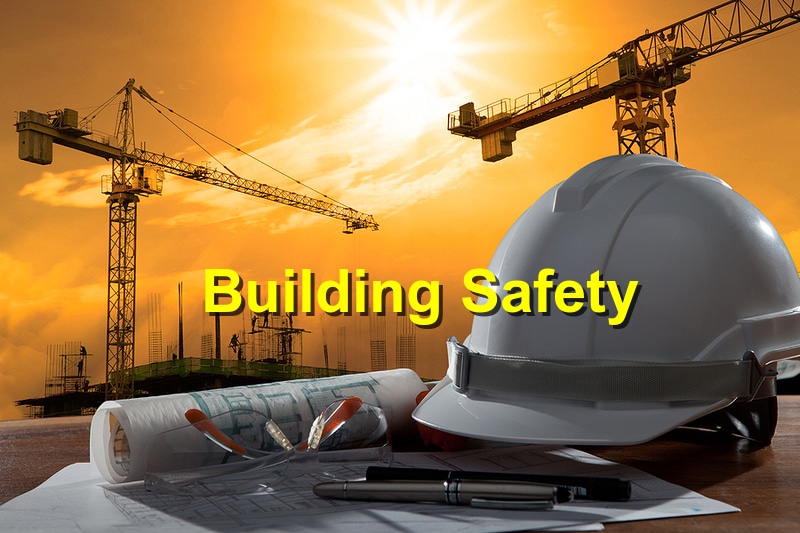Every May, National Building Safety Month serves as a critical reminder of the importance of safety in construction. Spearheaded by the International Code Council (ICC), this annual campaign raises awareness about the role building codes, inspection standards, and construction professionals play in protecting the public and promoting well-built environments.
In commercial and residential construction alike, safety isn’t just a legal requirement—it’s a foundational pillar for project success. Prioritizing safety ensures that buildings stand strong for decades, protects the people who use them, and reduces costly rework or liability issues.
Here’s how contractors, developers, and project managers can align with the goals of National Building Safety Month and make their construction projects safer, smarter, and more sustainable.
1. Understanding the Role of Building Codes
Building codes are essential for public health, safety, and welfare. They regulate everything from fire protection and electrical systems to structural integrity and energy efficiency.
Key benefits of enforcing codes:
- Prevent structural failures by ensuring materials and techniques meet minimum standards.
- Ensure life safety through proper design of exits, fire alarms, and sprinkler systems.
- Promote resilience against natural disasters like earthquakes, floods, or high winds.
Working with certified code officials during the planning phase helps avoid costly corrections later and improves approval timelines.
2. Investing in Training and Certification
Skilled, well-trained professionals are the first line of defense against construction-related hazards. Builders, inspectors, engineers, and subcontractors should regularly update their knowledge on codes, technologies, and safety procedures.
How training contributes to safety:
- Reduces jobsite accidents by teaching safe tool use, fall prevention, and hazard recognition.
- Improves project quality through understanding of compliance standards.
- Promotes accountability when workers are empowered to recognize and report risks.
Organizations like OSHA and the ICC offer certification programs, workshops, and continuing education that support safety competency at every level of the construction workforce.
3. Embracing Safety Technology
Modern technology has become a valuable tool in enhancing construction safety. From drones to wearable sensors, digital solutions help monitor conditions, reduce risk, and improve communication.
Popular tech innovations:
- Wearables track vital signs and send alerts if a worker is fatigued or overheated.
- Drones perform inspections in high-risk or hard-to-access areas.
- Building Information Modeling (BIM) identifies potential conflicts before construction begins, minimizing on-site hazards.
These tools create real-time visibility into jobsite conditions and can significantly reduce both accidents and delays.
4. Conducting Regular Safety Audits
Routine safety audits help ensure that compliance is maintained throughout the duration of a project—not just during inspections.
Benefits of frequent audits:
- Identify and fix risks early, before they become major issues.
- Foster a culture of safety, where everyone knows protocols and expectations.
- Verify that PPE and equipment are in proper working condition.
Scheduling both internal and third-party audits helps maintain transparency and instills confidence among stakeholders.
5. Planning for Emergency Preparedness
Construction sites can be vulnerable to fires, equipment malfunctions, and extreme weather. A clear emergency response plan is essential for protecting lives and minimizing damage.
Key components of an emergency plan:
- Evacuation routes and muster points clearly marked and communicated.
- First-aid stations stocked and accessible at all times.
- Communication protocols for alerting teams during an incident.
Training workers on what to do in different emergency scenarios can significantly reduce confusion and injury in high-stress moments.
6. Building for Long-Term Resilience
Safety doesn’t end when a project is completed. Sustainable, resilient construction practices ensure that buildings continue to protect occupants for years to come.
Resilience strategies:
- Use durable materials that resist wear and environmental damage.
- Design for local risks, such as floodproofing in coastal regions or seismic bracing in earthquake zones.
- Incorporate smart building systems that monitor energy use and alert for maintenance needs.
A resilient building is not only safer—it’s more cost-effective over time and better aligned with community sustainability goals.
7. Engaging the Community
National Building Safety Month also encourages builders and officials to educate the public. Hosting seminars, sharing safety information, and participating in local events can strengthen trust and awareness.
Why community engagement matters:
- Educates occupants about the importance of inspections and maintenance.
- Builds support for building code adoption and enforcement.
- Reinforces your company’s reputation as a responsible, safety-minded builder.
Consider using this month to publish articles, share safety stories, or collaborate with local building departments to host open houses or site tours.
Conclusion: Safety Is the Foundation of Success
National Building Safety Month is more than a campaign—it’s a reminder that the integrity and safety of our built environment begins with the decisions made on the construction site. By embracing modern safety practices, following building codes, investing in training, and involving the community, construction professionals can build not just structures—but safer, stronger communities.
As the industry continues to innovate and expand, let safety be the constant that drives your team forward.
References: Delaware




